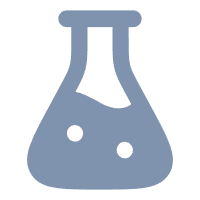OENRC2
Regulatory biopart collection
Collection Name
Hossain et al(2020)
Biopart Type
promoter
Brief Description
Engineered genetic systems are prone to failure when their genetic parts contain repetitive sequences. Designing many nonrepetitive genetic parts with desired functionalities remains a difficult challenge with high computational complexity. To overcome this challenge, we developed the Nonrepetitive Parts Calculator to rapidly generate thousands of highly nonrepetitive genetic parts from specified design constraints, including promoters, ribosome-binding sites and terminators. As a demonstration, we designed and experimentally characterized 4,350 nonrepetitive bacterial promoters with transcription rates that varied across a 820,000-fold range, and 1,722 highly nonrepetitive yeast promoters with transcription rates that varied across a 25,000-fold range. We applied machine learning to explain how specific interactions controlled the promoters’ transcription rates. We also show that using nonrepetitive genetic parts substantially reduces homologous recombination, resulting in greater genetic stability.
Chassis
E. coli
Reporter Gene
RNA-seq
Inducer
sgRNA binding site for dCas9SP-mediated transcriptional regulation
Culture Condition
From this baseline design constraint, we designed three toolboxes with separate goals (Fig. 3b and Supplementary Table 3). The first toolbox contains 800 promoter sequences with consensus hexamers, expected to have high transcription rates (SLP2018-1). The second toolbox contains 3,500 promoter sequences with systematically mutated hexamer sequences, expected to have varied transcription rates (SLP2018-2). The third toolbox contains 50 promoter sequences with highly mutated hexamer sequences, expected to have low transcription rates (SLP2018-3). We also included the standard J23100 promoter as an internal reference control.
Qualification method
We then constructed and characterized the 4,350 highly nonrepetitive promoters, combining barcoding, oligopool synthesis, library-based cloning and NGS (DNA sequencing (DNA-seq) and RNA sequencing (RNA-seq)) to measure their transcription rates in E. coli 5α cells (Methods). Overall, all promoter variants were covered by at least 21 DNA-seq and 40 RNA-seq counts with high reproducibility (Methods, Supplementary Figs. 6–8 and Supplementary Table 5). We determined the promoters’ transcription rates by taking the ratio between their RNA-seq and DNA-seq read counts and dividing by the J23100 promoter’s transcription rate for normalization. These massively parallel measurements were then independently confirmed by selecting 10 nonrepetitive promoters, separately cloning them into the same expression vector, including their sgRNA-binding sites, and measuring their mRNA levels using quantitative PCR with reverse transcription (RT–qPCR) (Pearson’s r=0.94; Fig. 3c and Supplementary Table 6). Additional isogenic fluorescence measurements provide further confirmation (Supplementary Fig. 9). All sequences, read counts and transcription rate measurements are included in Supplementary Data 3.
Reference
PMID:32661437 (Hossain A, Lopez E, Halper SM, Cetnar DP, Reis AC, Strickland D, Klavins E, Salis HM. Automated design of thousands of nonrepetitive parts for engineering stable genetic systems. Nat Biotechnol. 2020 Dec;38(12):1466-1475. doi: 10.1038/s41587-020-0584-2. Epub 2020 Jul 13. PMID: 32661437.)
Submitter
Biocuration
Functions
Sequence


 Related
Related